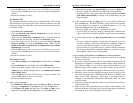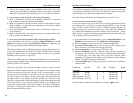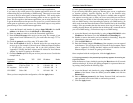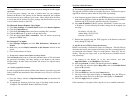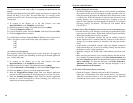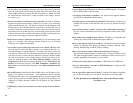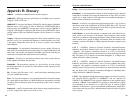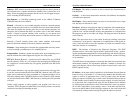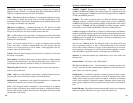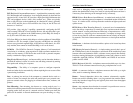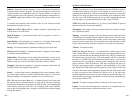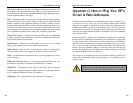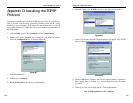
EtherFast
®
Cable/DSL Routers
DHCP supports static addresses for computers containing Web servers that need
a permanent IP address.
DMZ - (DeMilitarized Zone) allows one IP address (or computer) to be exposed
to the Internet. Some applications require multiple TCP/IP ports to be open. It
is recommended that you set your computer with a static IP address if you want
to use DMZ Hosting.
DNS - The Domain Name System (DNS) is the way that Internet domain names
are located and translated into Internet Protocol (IP) addresses. A domain name
is a meaningful and easy-to-remember “handle” for an Internet address.
Domain - A subnetwork comprised of a group of clients and servers under the
control of one security database. Dividing LANs into domains improves per-
formance and security.
Download - To receive a file transmitted over a network. In a communications
session, download means receive, and upload means transmit.
Driver - A workstation or server software module that provides an interface
between a network interface card and the upper-layer protocol software running
in the computer; it is designed for a specific NIC, and is installed during the ini-
tial installation of a network-compatible client or server operating system.
DSSS (Direct-Sequence Spread-Spectrum) - DSSS generates a redundant bit
pattern for each bit to be transmitted. This bit pattern is called a chip (or chip-
ping code). The longer the chip, the greater the probability that the original data
can be recovered. Even if one or more bits in the chip are damaged during trans-
mission, statistical techniques embedded in the radio can recover the original
data without the need for retransmission. To an unintended receiver, DSSS
appears as low power wideband noise and is rejected (ignored) by most narrow-
band receivers.
Dynamic IP Address - An IP address that is automatically assigned to a client
station in a TCP/IP network, typically by a DHCP server. Network devices that
serve multiple users, such as servers and printers, are usually assigned static IP
addresses.
Dynamic Routing - The ability for a router to forward data via a different route
based on the current conditions of the communications circuits. For example, it
can adjust for overloaded traffic or failing lines and is much more flexible than
static routing, which uses a fixed forwarding path.
95
Instant Broadband
™
Series
CPU (Central Processing Unit) - The computing part of the computer. Also
called the “processor,” it is made up of the control unit and ALU.
CSMA/CD (Carrier Sense Multiple Access/Collision Detection) - The LAN
access method used in Ethernet. When a device wants to gain access to the net-
work, it checks to see if the network is quiet (senses the carrier). If it is not, it
waits a random amount of time before retrying. If the network is quiet and two
devices access the line at exactly the same time, their signals collide. When the
collision is detected, they both back off and each waits a random amount of time
before retrying.
Daisy Chain - Connected in series, one after the other. Transmitted signals go
to the first device, then to the second, and so on.
Database - A database is a collection of data that is organized so that its con-
tents can easily be accessed, managed, and updated.
Data Packet - One frame in a packet-switched message. Most data communi-
cations is based on dividing the transmitted message into packets. For example,
an Ethernet packet can be from 64 to 1518 bytes in length.
Default Gateway - The routing device used to forward all traffic that is not
addressed to a station within the local subnet.
DHCP (Dynamic Host Configuration Protocol) - A protocol that lets network
administrators centrally manage and automate the assignment of Internet
Protocol (IP) addresses in an organization's network. Using the Internet’s set of
protocol (TCP/IP), each machine that can connect to the Internet needs a unique
IP address. When an organization sets up its computer users with a connection
to the Internet, an IP address must be assigned to each machine. Without DHCP,
the IP address must be entered manually at each computer and, if computers
move to another location in another part of the network, a new IP address must
be entered. DHCP lets a network administrator supervise and distribute IP
addresses from a central point and automatically sends a new IP address when a
computer is plugged into a different place in the network.
DHCP uses the concept of a “lease” or amount of time that a given IP address
will be valid for a computer. The lease time can vary depending on how long a
user is likely to require the Internet connection at a particular location. It’s espe-
cially useful in education and other environments where users change frequent-
ly. Using very short leases, DHCP can dynamically reconfigure networks in
which there are more computers than there are available IP addresses.
94



